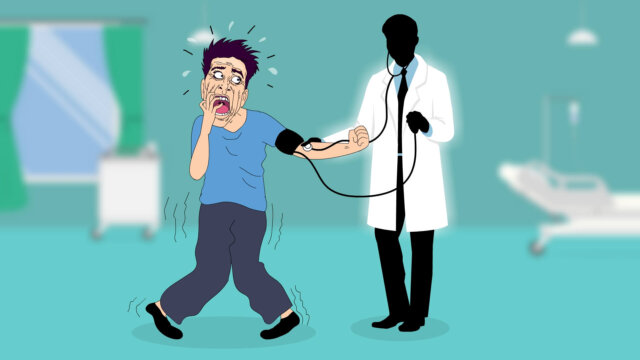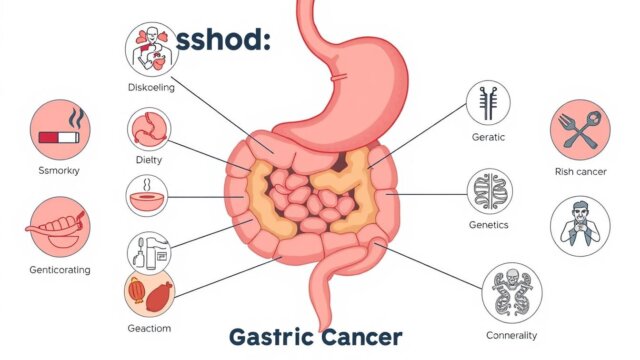FTC disclaimer: This post may contains affiliate links and we will be compensated if you click on a link and make a purchase.
Did you know over 98 million Americans have prediabetes, but most don’t know they do? This condition is a big health issue that often leads to type 2 diabetes. Type 2 diabetes is a chronic disease with serious effects. We’ll cover the causes, symptoms, risk factors, and how to manage prediabetes and stop it from turning into type 2 diabetes.
Key Takeaways
- Prediabetes means your blood sugar levels are higher than they should be, but not high enough for type 2 diabetes.
- Insulin resistance is a main cause of prediabetes, affected by too much weight, family history, and some health conditions.
- Prediabetes hits different ethnic and racial groups, especially non-Hispanic Black, Asian, and Native American people.
- Changing your lifestyle to eat better and exercise can help fix insulin resistance and stop type 2 diabetes.
- Checking your blood sugar, keeping a healthy weight, and talking to your doctor are important for managing prediabetes.
Understanding Prediabetes
Prediabetes is a health condition that often leads to type 2 diabetes. It means your blood sugar levels are higher than they should be, but not high enough to be called diabetes. Knowing how prediabetes works is important to stop it from getting worse.
What is Prediabetes?
Prediabetes happens when your body doesn’t respond well to insulin, a hormone that controls blood sugar. This makes your cells less able to use insulin. So, your pancreas makes more insulin to keep blood sugar levels normal. Over time, this can cause your blood sugar levels to get too high, which is prediabetes.
How Insulin Resistance Leads to Prediabetes
Insulin resistance is the main cause of prediabetes. When your cells don’t react well to insulin, your pancreas must make more insulin to keep blood sugar levels right. This can lead to higher blood sugar levels, which is a sign of prediabetes.
Being overweight or obese, not being active, and having a family history of diabetes can make insulin resistance and prediabetes more likely. Staying at a healthy weight, being active, and managing risk factors can help stop prediabetes from turning into type 2 diabetes.
“Understanding prediabetes and the role of insulin resistance is crucial for taking proactive steps to prevent the development of type 2 diabetes.”
Who is at Risk for Prediabetes?
Prediabetes is a serious health condition that affects many Americans. In the U.S., one in three adults has it, which is about 96 million people. But, over 80% of those with prediabetes don’t know they have it because they don’t get tested often. Knowing your risk factors is key to managing your health and stopping type 2 diabetes.
Risk Factors for Prediabetes
Some things make you more likely to get prediabetes. Being overweight or obese, with a BMI over 25, is one. Not moving much and eating a lot of red meat, processed meat, and sugary drinks also raises your risk. Getting older, after 45, also makes you more likely to get it.
Having family history of type 2 diabetes also ups your risk. Some races and ethnicities, like African-Americans, Hispanics, Native Americans, Asian-Americans, and Pacific Islanders, face a higher risk. Women who had gestational diabetes or have PCOS are also at a higher risk.
Ethnic and Racial Disparities in Prediabetes
Why some groups face more prediabetes risk is complex. It involves genetics, environment, and money issues. We need to tackle these issues to help these communities.
Knowing your risk factors is the first step to better health. By eating right, staying active, and keeping a healthy weight, you can lower your prediabetes risk. This can also stop you from getting type 2 diabetes.
Prediabetes Symptoms
Prediabetes is a serious health condition that often goes unnoticed. About 1 out of every 3 adults has it. Over 84 million people in the U.S. aged 18 and older have it. Many people with prediabetes don’t show any clear signs, but there are some signs to look for.
One common sign is feeling very thirsty and needing to pee a lot. People with prediabetes might also feel very tired, see blurry, and have skin patches that look dark and velvety.
Just because you have these symptoms doesn’t mean you have prediabetes. It’s more likely if you’re overweight or don’t move much. Some groups like African American, Alaska Native, American Indian, Asian American, Hispanic/Latino, Native Hawaiian, or Pacific Islander Americans are at higher risk.
If you see any of these signs, talk to your doctor. They can do tests like a fasting plasma glucose (FPG) test or an A1C test to see if you have it. They can then make a plan to help you.
Early detection and action can stop or slow type 2 diabetes, which is very serious. Knowing the signs and acting fast can improve your health and well-being.
Diagnosing Prediabetes
Prediabetes is diagnosed with blood sugar tests. The FPG test, OGTT, and A1C test are common tests. They check your blood sugar to see if it’s in the prediabetes range.
Blood Sugar Tests for Prediabetes
The ADA says diabetes is diagnosed at an A1C of 6.5% or higher. Prediabetes is when your A1C is between 5.7% and 6.4%. Or, your fasting blood sugar is 100 to 125 mg/dL, or your OGTT is 140 to 199 mg/dL.
Testing Children for Prediabetes
The ADA suggests testing kids who are overweight or have a family history of type 2 diabetes. Catching it early helps prevent type 2 diabetes in adults and kids.
Losing 7% of your weight or exercising daily can cut the risk of type 2 diabetes by 58%. Early detection lets people make changes to avoid type 2 diabetes.

“Approximately 90% of individuals with prediabetes are unaware of their condition.”
Early screening and action are key in fighting prediabetes and type 2 diabetes. Knowing about the tests and guidelines helps people take charge of their health. This can lower the risk of these serious conditions.
Complications of Untreated Prediabetes
Untreated prediabetes can lead to serious health issues. It can turn into type 2 diabetes, causing kidney disease, vision problems, nerve damage, and more. People with diabetes are at higher risk of cardiovascular disease. In fact, they are up to four times more likely to have heart attacks or strokes.
Diabetes is the top cause of vision loss worldwide. It’s also the fifth main reason for blindness and severe vision loss. Kidney failure is three times more common in those with diabetes. Amputations are 15 times more likely too.
Prediabetes can lead to “silent” heart attacks, with symptoms so mild they’re missed. Poor blood sugar control in type 2 diabetes raises the risk of heart problems like atherosclerosis. Heart disease is the top cause of death for those with diabetes.
Good news is, early action can prevent or delay type 2 diabetes and its issues. A study showed that the right treatment and support can greatly lower the risk of these complications.
It’s important to take prediabetes seriously and act to stop it from getting worse. Making healthy choices and getting medical advice can lower the risk of serious problems.
Complication | Impact |
|---|---|
Cardiovascular disease | People with diabetes are up to four times more likely to suffer heart attacks or strokes. |
Vision problems | Diabetes is the leading cause of vision loss globally and the fifth most common cause of preventable blindness and moderate to severe visual impairment. |
Kidney disease | Kidney failure is three times more common in people with diabetes. |
Nerve damage | Amputations are 15 times more common in people with diabetes. |
Mental health issues | More than 30 percent of people with diabetes experience depression, anxiety, and distress. |
Acting early on prediabetes can help prevent or delay type 2 diabetes and its complications.
Prediabetes Treatment and Management
Lifestyle Changes for Prediabetes
Making healthy changes is key to treating prediabetes. Eating well, exercising often, and keeping a healthy weight can lower your risk of getting type 2 diabetes. These changes can cut the risk of type 2 diabetes by up to 58% for people with prediabetes.
A diet full of nutrients is vital for managing prediabetes. Eat whole grains, fruits, veggies, lean meats, and healthy fats. Doing at least 150 minutes of moderate exercise a week, like brisk walking, can also help. Losing 5-10% of your weight if you’re overweight can also lower your risk of type 2 diabetes.
Managing stress and sleeping well are also key for prediabetes treatment. Quitting smoking can also boost your health and lower diabetes risks.
For kids with prediabetes, eating right, staying active, managing weight, and family support work well. Sometimes, kids might also need medicine like metformin along with these changes.
By making these lifestyle changes, you can help prevent prediabetes from turning into type 2 diabetes. This will also boost your overall health.

“Up to 70% reduction in the risk of developing type 2 diabetes by managing prediabetes effectively.”
Diet for Prediabetes
Healthy Eating Plans for Prediabetes
For those with prediabetes, eating right is key. Experts suggest diets like the Mediterranean, DASH, and low-fat diets. These diets focus on whole grains, fruits, veggies, lean proteins, and healthy fats. They also suggest cutting down on processed foods, added sugars, and refined carbs.
Eat 3-5 servings of veggies daily to improve insulin sensitivity and blood sugar control. Include starchy veggies like potatoes and squash as part of your meals. Add two to three servings of fruits like berries and oranges to your diet.
Choose whole-grain grains like oatmeal and brown rice. Nuts and seeds are good too, but eat them in small amounts. Make sure to include lean proteins like fish and eggs in your meals.
Limit sugary drinks like fruit juice and soda. Watch out for foods with high sugar content, aiming for those with less than 5% daily value.
Eating at regular times can help manage prediabetes. Eat within 2 hours of waking up and listen to your body’s hunger signals to avoid overeating. A dietitian can help make a meal plan that fits your needs and goals.
The Glycemic Index isn’t the main focus for prediabetes, but a balanced diet is key. Try the Mediterranean, plant-based, or DASH diets, which have been shown to help manage prediabetes.
Exercise for Prediabetes
Exercise is key in managing prediabetes and stopping it from becoming type 2 diabetes. The American Diabetes Association suggests people with prediabetes do at least 150 minutes of moderate exercise a week. This can be walking, swimming, or cycling. Mixing aerobic exercises with strength training helps improve insulin use, lose weight, and lower blood sugar.
Exercise helps those with prediabetes by making the body burn fat better and work more efficiently. A study showed that two weeks of high-intensity interval training (HIIT) can boost fat burning in adults with obesity and prediabetes. This boost can lower the risk of heart and diabetes problems, making HIIT a good way to prevent type 2 diabetes.
- Walking briskly for 30 minutes five times a week is good for managing prediabetes.
- Aerobic and strength training are great for managing prediabetes.
- Interval training can be done in many activities like walking, running, cycling, or swimming. It can last from 10 minutes to an hour, fitting easily into a busy life.
Adding different exercises to daily life can greatly improve health and lower the chance of getting type 2 diabetes for those with prediabetes. Getting help from a doctor or joining a National Diabetes Prevention Program can help make a good exercise plan and lasting lifestyle changes.

Exercise Type | Benefits for Prediabetes |
|---|---|
Aerobic Exercise | Improves insulin sensitivity, reduces blood sugar levels, and promotes weight loss. |
Strength Training | Enhances insulin sensitivity, builds muscle mass, and supports weight management. |
High-Intensity Interval Training (HIIT) | Increases fat oxidation, reduces cardiometabolic risk, and can be time-efficient. |
“Incorporating a combination of aerobic exercise and strength training can help improve insulin sensitivity, promote weight loss, and lower blood sugar levels.”
By making exercise a regular part of their life, people with prediabetes can manage their condition better and lower their risk of type 2 diabetes. Whether it’s walking fast, doing HIIT, or lifting weights, every exercise helps on the path to better health.
Weight Loss and Prediabetes
Keeping a healthy weight is key to managing prediabetes and lowering type 2 diabetes risk. Being overweight, especially around the belly, is linked to insulin resistance and prediabetes. Losing 5-10% of your weight can really help lower your risk of getting type 2 diabetes.
Weight loss comes from eating right and staying active. Focusing on losing belly fat can make insulin work better and control blood sugar. Even losing 2.2 pounds over three years can cut your diabetes risk by up to 16%.
For those with prediabetes who are overweight, eating less and moving more can really help. Losing about 5% of your weight can lower your diabetes risk a lot. It’s also good to exercise for 150 minutes a week and eat healthily, even if you’re not overweight.
Joining structured programs can cut your chance of getting type 2 diabetes by more than half if you’re overweight with prediabetes. The CDC’s Diabetes Prevention Program has shown for years that these lifestyle changes work well.
“Losing just 2.2 pounds over three years can reduce your diabetes risk by as much as 16%.”
By losing weight and changing your lifestyle, you can really improve your health with prediabetes. Making these changes can help you manage your prediabetes and lower your risk of type 2 diabetes.
The U.S. Preventive Services Task Force changed its diabetes screening rules in 2021. Now, adults who are overweight or obese can start screening at 35. This shows how important it is to catch prediabetes early. Also, a common medicine for prediabetes, metformin, can lower your risk of getting type 2 diabetes by about 33%.
Many groups like UCLA Health offer free programs to help people with prediabetes. These programs can lower your risk of type 2 diabetes. By using these resources and making lifestyle changes, you can manage your prediabetes and get healthier.
Prediabetes and Medication
If you have prediabetes, your doctor might suggest medication to help manage it and stop it from turning into type 2 diabetes. The most common medicine for this is metformin. It makes your body more sensitive to insulin and lowers blood sugar levels.
Metformin might be given to those at high risk of getting type 2 diabetes. This includes people with a history of gestational diabetes or a family history of the condition. Along with eating right and exercising, medicine can help manage prediabetes and lower the risk of problems.
The usual dose of metformin is between 1,000mg and 2,000mg, starting with 500mg a day. Sometimes, doctors might also prescribe other medicines, like those for insulin resistance or blood sugar control. But metformin is the main choice for managing prediabetes.
Remember, the best way to treat prediabetes is through lifestyle changes, like losing weight and staying active. These changes have been proven to greatly lower the risk of getting type 2 diabetes. The Centers for Disease Control and Prevention’s Diabetes Prevention Program (DPP) found losing 5-7% of your body weight can cut the risk by 58%.

Deciding to use medication for prediabetes should be talked about with your doctor. Consider your risk factors, lifestyle, and what you prefer. Using medicine, along with healthy habits, can help you manage your prediabetes and lower your risk of type 2 diabetes.
Preventing Progression to Type 2 Diabetes
The key to stopping prediabetes from turning into type 2 diabetes is acting early and taking good care of your health. By eating right, moving more, and keeping a healthy weight, you can lower your chance of getting type 2 diabetes.
Spotting and treating prediabetes early is key. This gives you a chance to make your body better at using insulin and controlling blood sugar. This can stop or slow type 2 diabetes and its bad effects.
- Losing 5 to 7 percent of your starting weight can prevent or delay diabetes.
- Getting at least 30 minutes of physical activity 5 days a week is recommended.
- Gestational diabetes increases the likelihood of developing type 2 diabetes within 5 to 10 years.
- Following a reduced-calorie eating plan is advised for individuals with prediabetes.
- Breastfeeding post-pregnancy is recommended for mothers who have gestational diabetes to help prevent type 2 diabetes.
In a big study, people cut their diabetes risk by almost 60% by losing about 7% of their weight through exercise and diet. The American Diabetes Association says losing 7% to 10% of your weight can stop the disease from getting worse.
To help with weight loss and staying at a healthy weight, adults should do at least 150 minutes of moderate to hard exercise each week. They should also do resistance exercises 2 to 3 times a week.
Eating foods high in fiber can help with weight loss and lower diabetes risk. Foods like fruits, veggies, beans, and whole grains are good choices. Foods with unsaturated fats, like olive oil, nuts, seeds, and fatty fish, are good for your heart and blood cholesterol levels.
The American Diabetes Association says everyone over 45 should get tested for type 2 diabetes. This is also true for people who are overweight or obese and have other diabetes risk factors.
Conclusion
Prediabetes is a serious health issue that can turn into type 2 diabetes if not handled. Knowing the causes, risk factors, and signs of prediabetes helps you manage your health. This can stop type 2 diabetes from happening.
Changing your lifestyle is key. This means eating healthy, moving often, and keeping a healthy weight. Sometimes, you might need medicine to keep your blood sugar in check.
Starting early and using a full plan to manage prediabetes can lower your risk of type 2 diabetes and its problems. This lets you live a healthier, happier life. Taking action against prediabetes stops it from turning into type 2 diabetes. It also lowers the risk of heart and blood vessel problems.
Prediabetes needs a detailed plan, but with the right steps and support, you can manage it. Eating well, exercising regularly, and keeping a healthy weight can boost your health. This also cuts down your risk of prediabetes and its problems.
FAQ
What is prediabetes?
Prediabetes means your blood sugar is higher than normal but not high enough for type 2 diabetes. It’s often called “borderline diabetes” and can lead to type 2 diabetes.
What causes prediabetes?
Your body may not respond well to insulin, a hormone that controls blood sugar. This can lead to prediabetes. Without treatment, it might turn into type 2 diabetes.
Who is at risk for developing prediabetes?
Being overweight or obese, having a family history of type 2 diabetes, being over 45, or having certain health issues like PCOS or sleep apnea increases your risk. Some ethnic and racial groups are also more likely to get it.
What are the symptoms of prediabetes?
Many people with prediabetes don’t show any signs. But, you might notice more thirst, blurry vision, or feeling very tired.
How is prediabetes diagnosed?
Doctors use blood sugar tests like the fasting plasma glucose test, oral glucose tolerance test, and hemoglobin A1C test to diagnose prediabetes. Kids and teens at risk should get tested too, especially if they’re overweight or have a family history of diabetes.
What are the potential complications of untreated prediabetes?
Without treatment, prediabetes can turn into type 2 diabetes. This can cause serious problems like kidney disease, vision issues, nerve damage, and increased heart disease risk.
How can prediabetes be managed and treated?
To manage prediabetes, you should eat healthy, exercise regularly, and keep a healthy weight. Sometimes, your doctor might prescribe medication like metformin to help control your blood sugar.
What are some recommended dietary approaches for managing prediabetes?
Eating right is key. Try the Mediterranean, DASH, or low-fat diets. These focus on whole grains, fruits, veggies, lean proteins, and healthy fats. Cut down on processed foods, added sugars, and refined carbs.
How can exercise help manage prediabetes?
Exercise is vital for managing prediabetes and preventing type 2 diabetes. Aim for 150 minutes of moderate exercise like walking, swimming, or cycling each week. Don’t forget strength training too.
Can weight loss help with prediabetes?
Yes, losing 5-10% of your weight can really help. It lowers your risk of getting type 2 diabetes.
When is a medication used to treat prediabetes?
Your doctor might suggest medication, like metformin, if you’re at high risk of getting type 2 diabetes. This includes those with a history of gestational diabetes or a strong family history.
How can I prevent prediabetes from progressing to type 2 diabetes?
Catching it early and taking care of your health is key. Eat well, exercise, and keep a healthy weight. Early treatment and lifestyle changes can lower your risk of type 2 diabetes and its complications.








